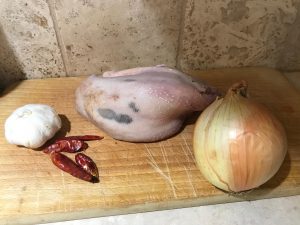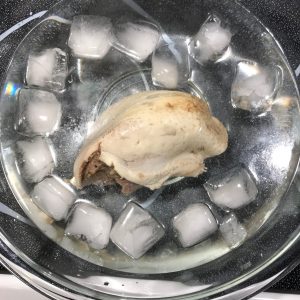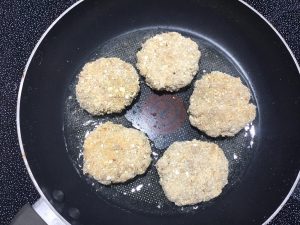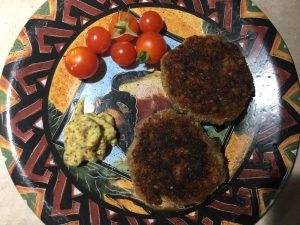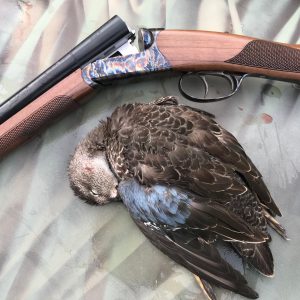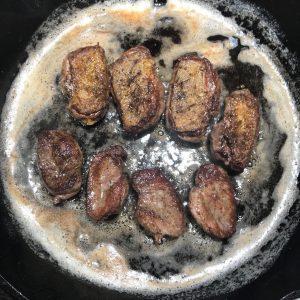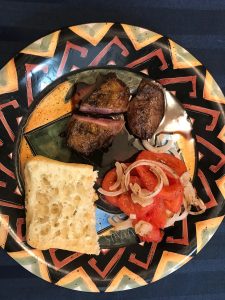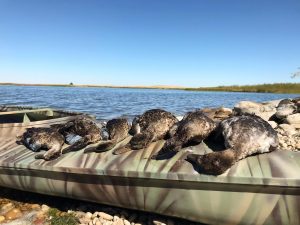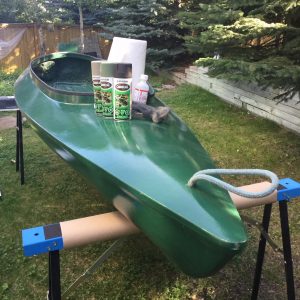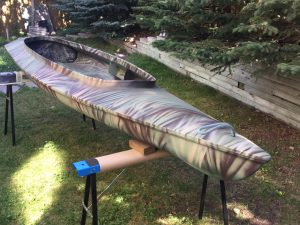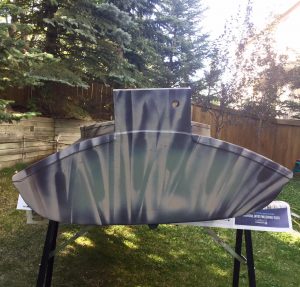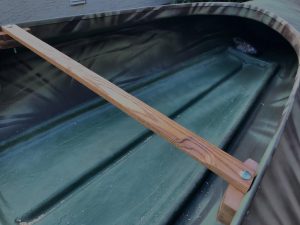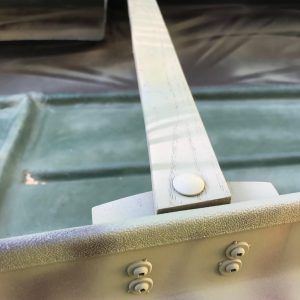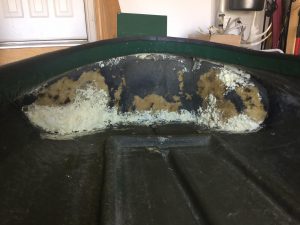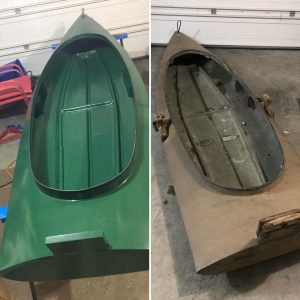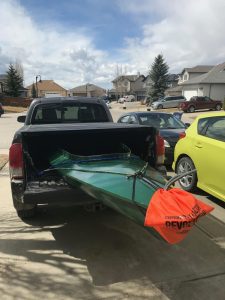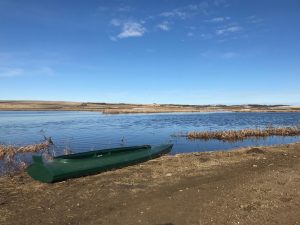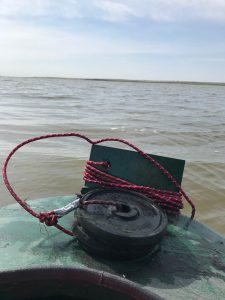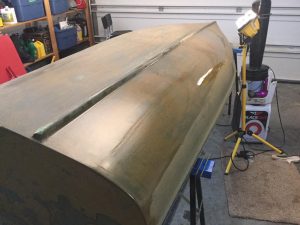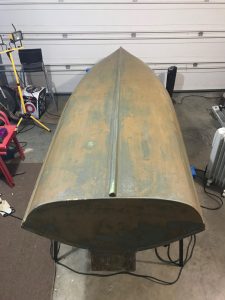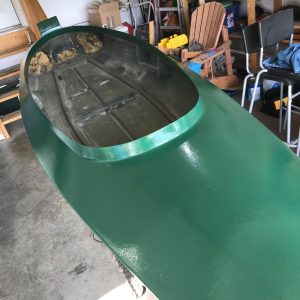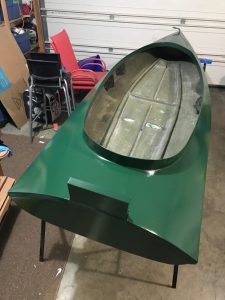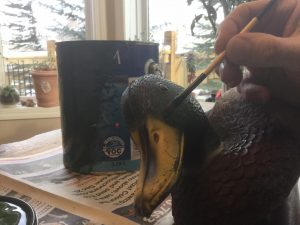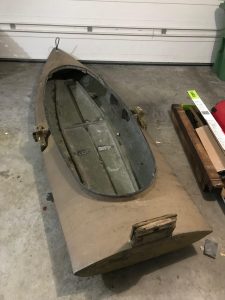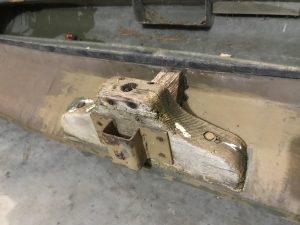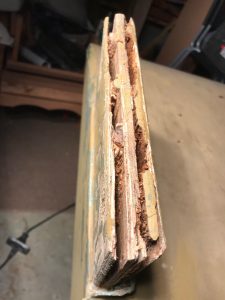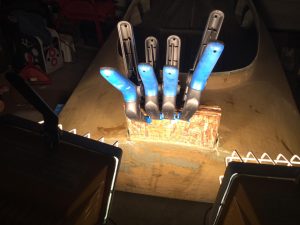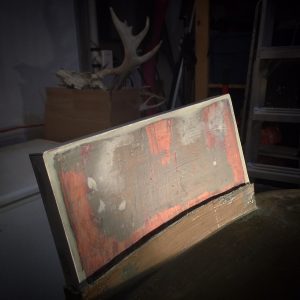Long, long overdue was the making of sausage from the bags of moose ground patiently waiting in my freezer. With hunting plans foiled by a persistent health issue, a beautiful September morning was as good as day as any to whip up a trial batch of three flavours of moose sausage: jalapeno/cheddar, chorizo(ish) and bratwurst.
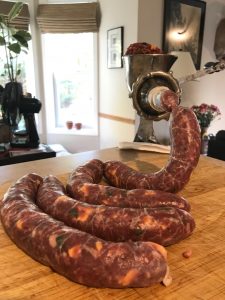
I won’t dive too deep into the sausage making process, there is so much material available, I don’t need to add to that. Here are just a few highlights, observations, and recipes adapted from online sources that seems to be quite OK for our palate.
The meat
We mixed clean moose ground (removed most of the undesirable tissue before grinding) 50/50 with store bought lean pork ground. I feared we would be a tad low on fat on the final product and I was right. Next time I’ll look for something a little fattier to mix in. But I don’t mind a fairly dry sausage, so in a pinch I’d use the same mixture again.
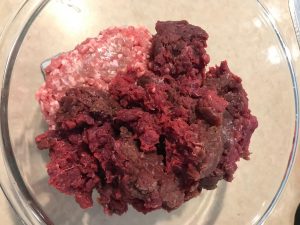
The spices and additives
For the jalapeno/cheddar we used regular old cheddar, but I saw a thing called ‘high-temperature cheddar’ on the sausage making supplier’s list later. Perhaps that resists melting during the cooking process a bit better, so the cheese doesn’t run out of the sausage as much as regular cheddar.
All the other ingredients were just what we could buy at local grocery stores. Some of the more exotic ingredients were not available without going into the city, which I didn’t do.
The recipes
I’m just giving the ingredients. Everything was mixed well, and stuffed into real hog casings (29-32mm in diameter) using a hand-powered cast iron stuffer. Yes, those still exist.
Jalapeno cheddar
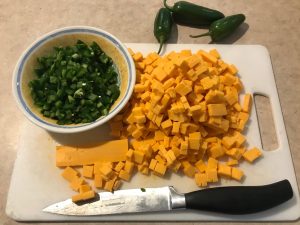
jalapenos (medium size, pits and white stuff on the inside removed; diced)
1/2-1 lb cheddar (one source called for a full pound of cheese, I ended up using less)
4 tsp salt (next time I’ll do 3 tsp, as it came out a bit salty)
2 tsp black pepper
1/2 tsp sage powder
1 tsp garlic powder
1 tsp garlic powder
1 tsp smoked paprika
Chorizo(ish)
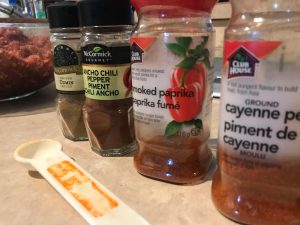
I’m calling it Chorizo(ish) because we couldn’t find a number of ingredients, and shied away from some of the quantities of spices mentioned in a recipe we found. We were going for a milder taste, not a burn-your-tastebuds-off-your-tongue experience (adapted from this recipe at honest-food.net).
1kg moose + 1kg pork
3 tsp sea salt
1 tsp cayenne
2 tbs ancho chili powder
1+ tsp chipotle paste (I couldn’t tell you how to get this, my wife brought some home from work. It’s really concentrated stuff. Could possibly be replaced by the chipotle chili powder I saw at Safeway
2 tsp cumin
2 tbs oregano
8 garlic cloves
1 tsp smoked paprika
Bratwurst
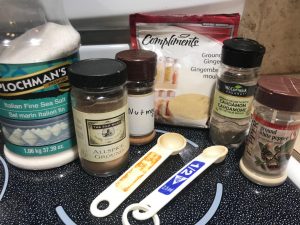
Ended up using 1 kg of pork ground and 3/4 kg of moose for this mixture.
2.5 tsp sea salt
1/2 tsp sage
1/2 tsp cardamom
1 tsp white pepper
1 tsp ginger
1 tsp allspice
1/2 tsp nutmeg
1 onion chopped finely
We have two more 3 kg bags of moose ground in the freezer. I am so happy that my friends convinced me to come back out with the rifle after an exhilarating archery season, even though it felt like cheating at the time. The bounty coming from this animal has no end (well, sadly it will have an end, but for now, we are still eating it).
